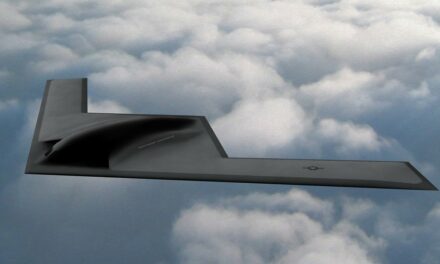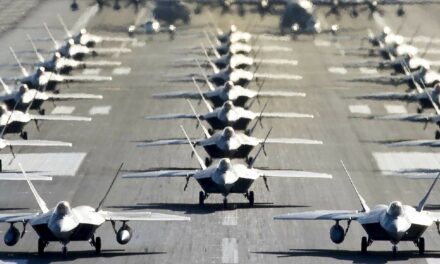We support our Publishers and Content Creators. You can view this story on their website by CLICKING HERE.
Let Ukraine Use Western Weapons in Russian Territory: During the ongoing Russian invasion of Ukraine, the Kremlin, despite taking extremely heavy casualty rates not seen since the Iran-Iraq War, has adopted tactics on the battlefield—at times to their favor.
Being an autocracy, Russia is willing to throw in hundreds of thousands of men to achieve either outright victory or favorable negotiations, whereas Ukraine, becoming a democracy, is more sympathetic and caring to the state of its war-battered troops.
However, there is one major advantage Russia is banking on that has made battlefield conditions favorable for them in 2024, which is the advantage of amassing forces and equipment on their side of the border Ukraine has had problems reaching due to restrictions by partnered nations.
Restriction Use on Western Weapons
Ukraine, which started to receive heavy weaponry in the late spring of 2022, such as American HIMARS, British storm shadows, and French scalp missiles, used the weapons to its advantage to take our numerous ammunition depots, command posts, and high-level Russian military leadership.
The use of HIMARS played a major role in Ukraine’s key offensives in Kharkiv and Kherson in 2022, especially as the latter city became isolated due to rocket strikes against Russia’s logistics along the Dnipro River. British and French storm shadows and scalps, respectively, took out numerous high-value targets, such as upper-echelon Russian officers and numerous naval vessels of the Black Sea Fleet.
Though Ukraine is using the weaponry to its advantage to attack Russian forces on Ukrainian soil, Kyiv is restricted in the use of Western weaponry on Russian soil, and due to this policy, Moscow adapted to perceived appeasement.
How Russia Takes Advantage of Such Policies
Russia, which lost a plethora of warplanes and artillery inside of Ukraine, now uses its territory to strike Ukrainian cities at will. Whereas Ukraine has no restrictions on homegrown weaponry, such as their First-Person View (FPV) drones, drone warfare cannot take planes out of the sky or strike large formations of troops directly on the Russian border.
German Chancellor Olaf Schulz is the most timid and precarious of sending the Taurus missiles to Ukraine, which have a range of 700 km and can strike the majority of Russian military logistics and troop formations. Now, using Western indecision to their advantage, Russian warplanes do not have to leave their airspace to conduct long-range bombing missions on battered cities such as Kharkiv, Chasiv Yar, and others.
Before Russia’s 2024 Kharkiv offensive, the Ukrainian Armed Forces noticed a military buildup on the Russian border and, despite FPV use, couldn’t do much to deter Moscow with the long-range surface-to-surface and artillery use restrictions. Using this advantage, Russian forces were able to initially make gains in the Kharkiv region again before the line stabilized.
Wanting to stretch out Ukraine’s reserves to find a weak spot on its defense, akin to what Kyiv did in the autumn of 2022, Moscow is now amassing troops along its border with Ukraine’s Sumy region. Once again, Ukraine’s military is restricted from using Western weapons to strike Russian forces near the Sumy border before a potential looming offensive comes.
Russia Has Used Their Tools on NATO Soil in the Past
While NATO remains at a crossroads over the use of its stockpiles on Russian soil, the Kremlin continues its operations in Europe unabated. In 2018, Russian operatives deployed a nerve agent in the British city of Salisbury in an attempt to poison a defected intelligence operative.
During the ongoing war in Ukraine, Russia is testing NATO’s red lines by flying missiles and drones over Polish and Romanian airspace, respectively. Conducting the flyovers is not just a sign of dominance by Russia but also a tactic at hoping NATO doesn’t respond to missiles. Still, instead, Ukraine does, leading to incidents of air defense shootdowns over civilian areas.
Adjacently, Russia is using electronic warfare to jam GPS systems in Eastern Europe. Such measures disrupt air traffic and raise concerns about potential civilian commercial aircraft incidents.
Allies Bordering Russia Show No Fear, and Neither Should We
One strict contradiction in NATO members in North America and Western Europe restricting the use of their weapons in Russian territory is that Eastern Europe, which borders Russia, green-lights their weaponry usage.
Estonia and Finland, which share borders with Russia with much smaller active militaries, state they will give no restrictions on their homegrown weapons. Finland, which shares the largest NATO border with Russia and sits close to Saint Petersburg and Russia’s arctic battalions, knows all too well of the Kremlin tactics and will escalate if Moscow sees weakness in their foes.
On the weekend of May 18th, Ukraine successfully used an ATACMS missile to sink a Black Sea Fleet naval vessel. Before America transferred the missiles, Russia made threats of direct war if ATACMS were used on their military, and the lack of response by the Kremlin displays their bluffs.
Vladimir Putin, a longtime autocrat and careerist intelligence officer, has made a career out of playing the game of escalation in his foreign policy. When a country confronts his aggression, akin to Turkey and the United States during their engagements in Syria, he backs off. He will escalate to gain favor in future negotiations when weakness is shown, such as the restrictions on Western weaponry in Ukraine.
NATO as an alliance must remember Russia will continue to escalate, and though high stakes are being played in Ukraine, the Kremlin, for now, is not willing to engage in a direct war with the organization.
Kaja Kallas, the PM of Estonia, recently explained that Putin will continue to perceive indecision as appeasement regarding the inane restrictions with weaponry. We cannot allow one man and his country to dictate fears of escalation or nuclear war, especially as numerous bluffs have been called. NATO itself holds atomic weapons as well as superior firepower.
Today, if the alliance does not show ‘peace through strength,’ Russia will use Western fears to either outright win in Ukraine or gain a favorable settlement on their terms. Ultimately, such weaknesses will inevitably lead to direct war with NATO, and in the years to come, we will ponder why we didn’t do enough to stop a war machine before a major showdown when we could’ve.
About the Author: Julian McBride
Julian McBride is a forensic anthropologist, SOFREP contributor, and independent journalist born in New York. He reports and documents the plight of people around the world who are affected by conflicts, rogue geopolitics, and war, and also tells the stories of war victims whose voices are never heard. Julian is the founder and director of the Reflections of War Initiative (ROW), an anthropological NGO which aims to tell the stories of the victims of war through art therapy. As a former Marine, he uses this technique not only to help heal PTSD but also to share people’s stories through art, which conveys “the message of the brutality of war better than most news organizations.”

 Conservative
Conservative  Search
Search Trending
Trending Current News
Current News 





